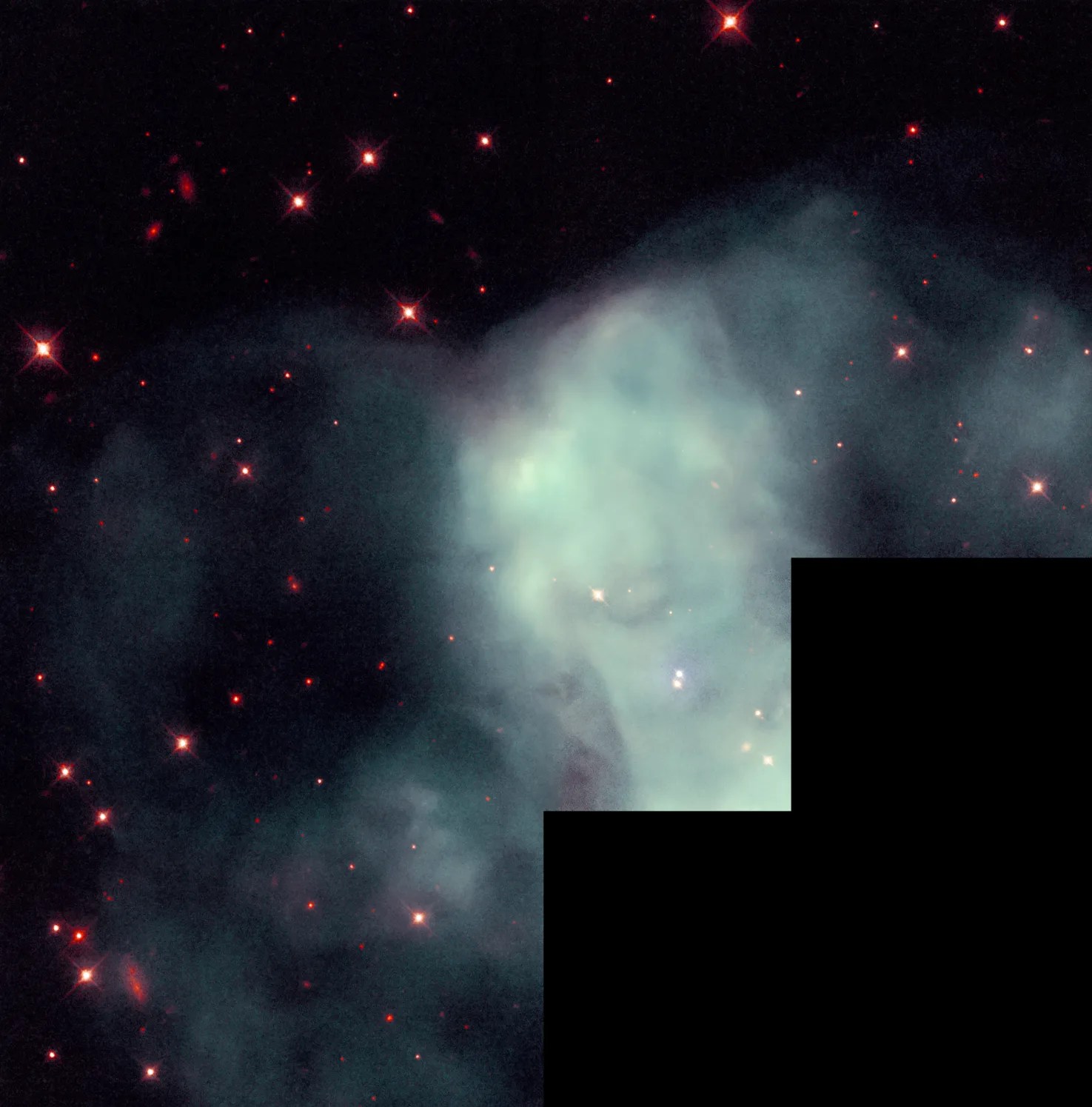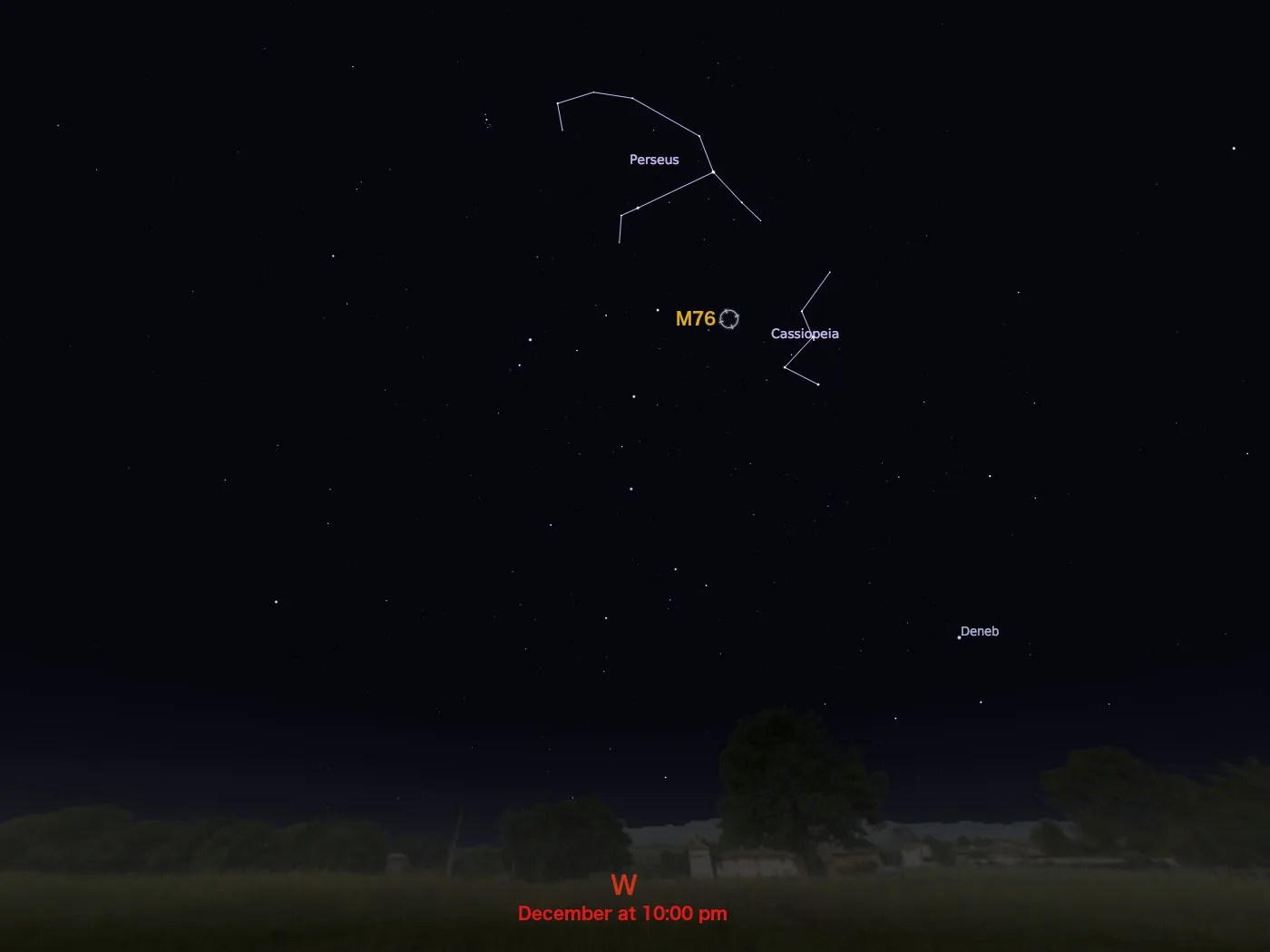Messier 76
This planetary nebula is also known as the Cork Nebula, Barbell Nebula, or Little Dumbbell Nebula.
Distance
~3,400 light-years
Apparent Magnitude
12.0
constellation
Perseus
object type
Planetary Nebula

This Hubble image features the Little Dumbbell Nebula, M76. Other names for M76, the Cork Nebula or the Barbell Nebula. M76 was also given two New General Catalog numbers, NGC 650 and NGC 651, because it was formerly suspected to be a double nebula with two components touching each other. The name 'Little Dumbbell' comes from its shape that is a two-lobed structure of colorful, mottled, glowing gases resembling a balloon that’s been pinched around a middle waist.
M76 is a planetary nebula, which is an expanding shell of gas around an aging or dying star, and it is one of only four planetary nebulae in Charles Messier’s catalog. M76 is located in the constellation Perseus and is approximately 3,400 light-years away from Earth.

The Hubble image above is from observations of M76 with the Wide Field and Planetary Camera 2 and the Wide Field Camera 3 in near-infrared and visible light. Most of the image is in visible light, where part of the nebula’s center (shown in green) is located just above the black “steps” in the image. (The “steps” are created by the layout of the detectors of the Wide Field and Planetary Camera 2. Three of the camera’s four light detectors imaged “wide fields,” while the fourth detector had higher resolution but covered a smaller portion of the sky. When data from all four detectors are combined to create an image, the fourth is aligned to match the other three, producing the "steps."). Other stars not associated with the nebula appear as red dots throughout the image. The Hubble observations were taken to further understand the distribution and evolutionary states of planetary nebulae.
Discovered in 1780 by Messier’s colleague Pierre Méchain, M76 has an apparent magnitude of 12 and is best viewed in December. While it is possible to spot M76 with large binoculars at a dark site, the nebula’s small size and faintness make it one of the more difficult Messier objects to observe. Telescopes 8 inches or larger are needed to reveal the double-lobed structure of the nebula.

Explore Hubble's Messier Catalog
The following pages contain some of Hubble’s best images of Messier objects.

Messier 1 (The Crab Nebula)
Better known as the Crab Nebula, Charles Messier originally mistook Messier 1 for Halley’s Comet, which inspired him to create…

Messier 2
Hubble's image of Messier 2 is comprised of visible and infrared wavelengths of light.

Messier 3
Messier 3 holds more than 500,000 stars.




